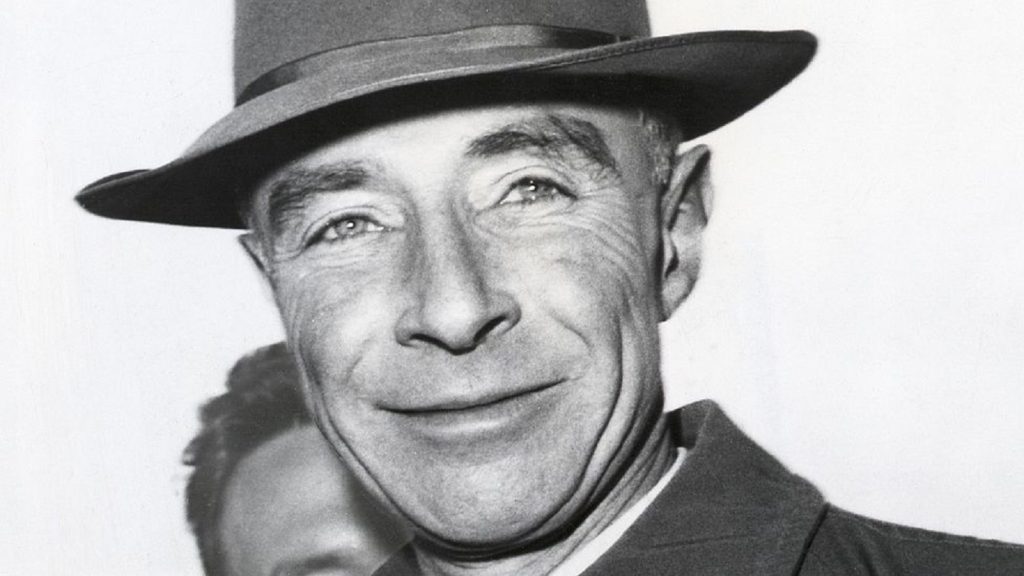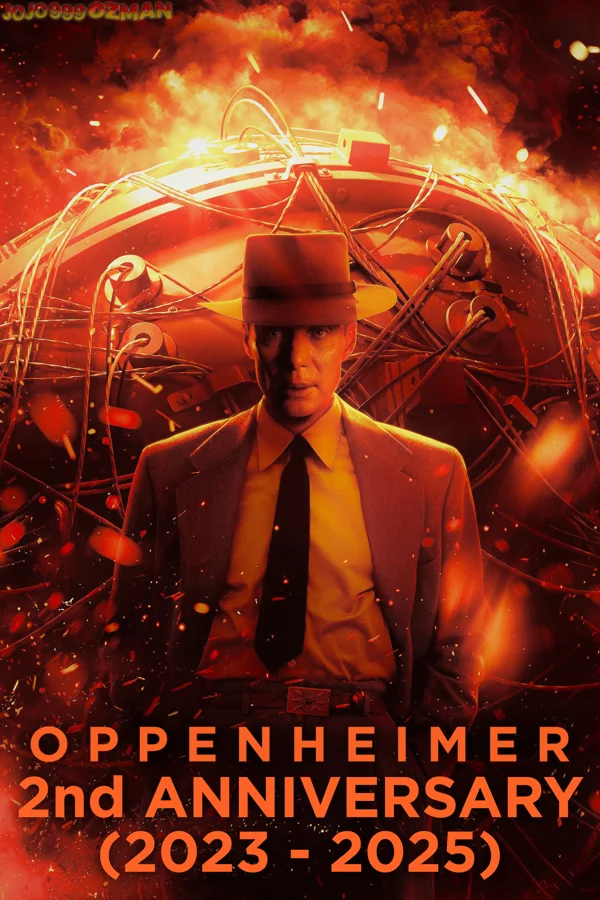Exploring The Oppenheimer Sex Scene: Unpacking Its Place In The Film's Story
The film "Oppenheimer," a very big movie from director Christopher Nolan, really got people talking. It's a dramatization of the life story of J. Robert Oppenheimer, a brilliant physicist, as the text tells us. This film, you know, takes us through his journey, from his early days to his pivotal role in developing atomic weapons. It's a story that forever changed the course of history, and it brought many complex parts of his life into view for a wide audience.
Among the many intense moments and deep discussions in the movie, one particular aspect caught a lot of attention. That, is that, the film includes a scene that portrays a very personal relationship in Oppenheimer's life. This scene, involving Cillian Murphy as Oppenheimer and Florence Pugh as Jean Tatlock, became a major point of conversation for viewers and critics alike, sparking many discussions about its presence and meaning. It's almost as if it became a character in itself, in a way, for some people watching.
People were, you know, quite curious about this part of the movie. They wanted to know more about it, what it showed, and why it was included in such a serious historical drama. This curiosity, you know, really highlights how much people connect with stories about real people, especially when those stories explore the more private sides of their lives. We'll explore this specific part of the film, looking at its context and the conversations it started, so we can get a better sense of why it mattered to so many viewers.
Table of Contents
- J. Robert Oppenheimer: A Brief Look
- Personal Details & Bio Data
- The Oppenheimer Sex Scene: What Happened
- Jean Tatlock's Role and Connection
- The Scene's Purpose in the Narrative
- Audience Reactions and Discussions
- The Actors' Perspectives
- The Film's Portrayal of Oppenheimer's Relationships
- Looking Back at Oppenheimer's Life
- Frequently Asked Questions About the Scene
- Final Thoughts on a Powerful Film
J. Robert Oppenheimer: A Brief Look
J. Robert Oppenheimer was an American theoretical physicist, as the provided text tells us. He was, you know, a very gifted and driven individual, someone who really stood out in his field. During World War II, he became the first director of the Los Alamos Laboratory, a place established by the Manhattan Project. This project, of course, was all about developing the atomic bomb, a weapon that, in a way, changed the world forever.
The text also describes Robert as a solitary and precocious child. He apparently enjoyed mineralogy and writing poetry, which paints a picture of someone who had, you know, a deep inner world. He was an enigmatic physicist, someone who grappled with scientific advancement versus the horrors of war. This struggle, you know, is a central part of his story, and the film really tries to show that side of him.
His role in the development of atomic weapons was, quite simply, pivotal. He had a large hand in creating the atomic bombs that brought an end to World War II. The film, in some respects, explores his life from leading the Manhattan Project to facing political fallout and grappling with the ethics of nuclear weapons. It's a story of great scientific achievement mixed with profound moral questions, and that's what makes it so compelling, you know.
Personal Details & Bio Data
| Full Name | J. Robert Oppenheimer (Julius Robert Oppenheimer) |
| Primary Role | American Theoretical Physicist |
| Key Project | First Director of Los Alamos Laboratory (Manhattan Project) |
| Major Contribution | Pivotal role in developing atomic weapons |
| Wife in Film | Katherine “Kitty” Oppenheimer (played by Emily Blunt) |
| Key Characteristics | Brilliant, solitary, precocious, gifted, driven, enigmatic |
The Oppenheimer Sex Scene: What Happened
The film "Oppenheimer" includes a scene that, you know, depicts a very personal moment between J. Robert Oppenheimer, played by Cillian Murphy, and Jean Tatlock, played by Florence Pugh. This part of the movie, as a matter of fact, shows a romantic encounter between the two characters. It's a brief but, you know, quite memorable sequence that became a talking point for many viewers. The scene is, in a way, meant to show a different side of Oppenheimer's life, moving beyond his scientific pursuits.
Without getting into too much detail, the scene portrays an intimate interaction that, you know, highlights the nature of their relationship. It's not just about the physical aspect; it's also about the emotional connection, or perhaps the lack of it, that existed between them. The scene, you know, is designed to give us a glimpse into Oppenheimer's private world, showing his personal life and the people who were part of it, which is, you know, a really important part of telling his full story.
This particular moment in the film, you know, is placed at a point where Oppenheimer's life is already full of complexity. It serves, arguably, to add another layer to his character, showing that he was not just a scientist focused solely on his work. He was, in some respects, a person with relationships, desires, and personal struggles, just like anyone else. This scene, you know, really makes that point clear for the audience, and it's something people definitely noticed.
Jean Tatlock's Role and Connection
Jean Tatlock was, you know, a significant figure in J. Robert Oppenheimer's life, and her presence in the film is very important. She was a psychiatrist and, as the story goes, had a romantic relationship with Oppenheimer before and during his marriage to Kitty. The film, in a way, shows this connection as a key part of his personal history. Her character, you know, represents a different kind of influence on Oppenheimer compared to his scientific colleagues.
Their relationship, you know, was known to be intense and, at times, quite turbulent. Jean Tatlock was, in fact, a member of the Communist Party, and her political affiliations later caused problems for Oppenheimer during the security hearings he faced. The film, you know, uses her character to explore not just his romantic life but also the political pressures and scrutiny he experienced. This connection, you know, really adds depth to the overall narrative of his life.
The inclusion of Jean Tatlock's character and her relationship with Oppenheimer helps to paint a more complete picture of the man behind the atomic bomb. It shows that, in some respects, his life was not just about physics and war; it was also about personal connections, love, and loss. Her story, you know, is intertwined with his, and the film makes sure to highlight that, giving us a fuller sense of who he was as a person, which is, you know, pretty compelling.
The Scene's Purpose in the Narrative
The decision to include the oppenheimer sex scene in the film was, you know, a deliberate choice by the filmmakers. It wasn't just there for shock value; it served a specific purpose within the larger story. One main reason, you know, was to show the human side of J. Robert Oppenheimer. The text mentions he was an enigmatic physicist who grappled with scientific advancement versus the horrors of war. This scene, in a way, underscores his personal complexities and vulnerabilities.
It helps to illustrate that, you know, even someone as brilliant and historically significant as Oppenheimer had a personal life, with all its messy parts. His relationship with Jean Tatlock, as a matter of fact, was a significant part of his emotional landscape. The scene, you know, aims to portray the depth and nature of that connection, showing how it might have influenced him, even subtly, in his other pursuits. It gives us a look at his inner world, you know.
Furthermore, the scene provides context for later events in Oppenheimer's life, particularly the security hearings where his past relationships, including the one with Tatlock, were scrutinized. It shows, you know, the personal risks and vulnerabilities he carried. By presenting this intimate aspect of his life, the film, in some respects, makes him a more relatable and three-dimensional character, rather than just a historical figure. It's about showing the whole person, you know, not just the public persona.
Audience Reactions and Discussions
The oppenheimer sex scene, you know, definitely sparked a lot of conversations among people who watched the movie. Some viewers felt it was a necessary part of telling Oppenheimer's full story, showing his personal life and the complexities of his character. They might have seen it as, you know, a way to humanize him, making him more than just a scientist. This perspective, you know, often emphasized the narrative importance of the scene.
On the other hand, some people found the scene, you know, to be distracting or even unnecessary. They might have felt it took away from the film's main focus on the development of the atomic bomb and the historical significance of Oppenheimer's work. This viewpoint, you know, often centered on the idea that the film should have stuck more strictly to the scientific and political aspects. It's interesting how, in a way, different people took different things from it.
The discussions around the scene also touched on the portrayal of historical figures and the choices filmmakers make when bringing real lives to the screen. It raised questions about, you know, how much of a person's private life should be shown in a biographical film. These conversations, you know, reflect the varied expectations people have when they go to see a movie based on real events. It's clear that, you know, the scene made a lasting impression on many viewers, for various reasons.
The Actors' Perspectives
Cillian Murphy, who plays J. Robert Oppenheimer, and Florence Pugh, who portrays Jean Tatlock, have both, you know, spoken a bit about the scene and its role in the film. Actors often approach these kinds of moments with a deep understanding of their characters and the story being told. For them, it's about portraying the full range of human experience, and that, you know, includes intimate relationships.
Murphy, in some respects, has talked about the scene as being important for understanding Oppenheimer's character and his personal struggles. He likely saw it as, you know, a way to show the emotional depth of the physicist, rather than just his intellectual prowess. It's about getting into the mind of the person, you know, and showing what made him tick. This perspective, you know, really emphasizes the character development aspect.
Florence Pugh's portrayal of Jean Tatlock was, you know, also very important to the scene's impact. Her performance helped to convey the intensity and complexity of Tatlock's relationship with Oppenheimer. For actors, these scenes are, in a way, about building a believable connection between characters, making their interactions feel real to the audience. They are, you know, trying to tell a story through their performances, and sometimes that story involves very personal moments.
The Film's Portrayal of Oppenheimer's Relationships
Beyond the oppenheimer sex scene, the film "Oppenheimer" explores several important relationships in the physicist's life. The text mentions Emily Blunt, 40, plays Katherine “Kitty” Oppenheimer, the wife of Murphy’s character. Kitty's relationship with Robert was, you know, another central part of his personal story, and the film gives it considerable attention. It shows the ups and downs of their marriage, especially during the intense period of the Manhattan Project and the later political fallout.
The film, you know, tries to show how these personal connections, both with Jean Tatlock and with Kitty, shaped Oppenheimer as a person. They were not just background elements; they were, in some respects, integral to his emotional and psychological state. His interactions with these women, you know, reveal different facets of his personality – his vulnerabilities, his desires, and his capacity for connection, or perhaps, for detachment.
By including these relationships, the movie aims to provide a more holistic view of J. Robert Oppenheimer. It shows that, you know, even a man who forever changed the course of history with his scientific work was also a person with a complicated private life. This balance between the public and private, the scientific and the personal, is what, you know, makes the film so compelling and gives it a human touch. It's a way of saying, you know, he was a real person, not just a figure in a textbook.
Looking Back at Oppenheimer's Life
The film "Oppenheimer" really encourages us to look back at the life of J. Robert Oppenheimer with a fresh perspective. As the text notes, he was a gifted and driven theoretical physicist who played a pivotal role in developing atomic weapons. His story, you know, is one of immense scientific achievement, but also one of profound moral and ethical questions. He grappled with the ethics of nuclear weapons, which is, in a way, a very heavy burden to carry.
The movie, in some respects, explores his journey from leading the Manhattan Project to facing political fallout. It shows how his life was, you know, deeply intertwined with the major historical events of his time. His experiences, from his solitary childhood to his leadership during the war, all contributed to the person he became. It's a story that, you know, really makes you think about the responsibility that comes with great power and knowledge.
By presenting a comprehensive dramatization of his life, including personal relationships and internal struggles, the film helps us understand the man behind the myth. It allows us to explore the legacy of J. Robert Oppenheimer, not just as a scientist, but as a complex human being. This kind of storytelling, you know, makes history feel more immediate and relevant, showing us that even historical figures had lives full of personal moments, just like us. You can learn more about his historical context here, if you're curious.
Frequently Asked Questions About the Scene
Here are some common questions people have about the Oppenheimer sex scene and related topics:
Was there a sex scene in Oppenheimer?
Yes, there was a scene in the film "Oppenheimer" that depicted an intimate moment between J. Robert Oppenheimer, played by Cillian Murphy, and Jean Tatlock, played by Florence Pugh. It was, you know, a part of the film that drew a lot of attention and discussion among viewers.
Who was Jean Tatlock in Oppenheimer?
Jean Tatlock was a historical figure who had a romantic relationship with J. Robert Oppenheimer. In the film, she is portrayed by Florence Pugh. Her character, you know, represents a significant personal connection in Oppenheimer's life, and her story is interwoven with his, especially regarding his personal and political scrutiny.
Why was the Oppenheimer sex scene controversial?
The scene became a topic of discussion for various reasons. Some found it, you know, surprising or unnecessary in a historical drama, while others viewed it as a vital part of showing Oppenheimer's full character and his complex personal life. It sparked conversations about the portrayal of intimacy in biographical films and the choices filmmakers make, you know, when telling a real person's story.
Final Thoughts on a Powerful Film
The film "Oppenheimer" offers a deep look into the life of a very important historical figure. The inclusion of the oppenheimer sex scene, you know, was a creative decision meant to show the layers of J. Robert Oppenheimer's personality. It highlights that he was not just the brilliant physicist behind the Manhattan Project, but also a person with complex relationships and inner struggles. This scene, in some respects, adds to the film's overall goal of presenting a complete picture of his life.
The discussions around this particular scene, you know, really show how much people care about how historical figures are presented on screen. It tells us that viewers are interested not just in the big historical events, but also in the personal lives that shaped those events. The film, you know, invites us to think about the man himself, with all his contradictions and human experiences. It's a powerful way to tell a story that, you know, forever changed the world.
If you're curious to understand the full scope of Oppenheimer's life and the context of this scene, watching the film is, you know, really the best way to do it. It allows you to see how all these different parts of his story fit together. Learn more about Oppenheimer on our site, and Discover more about the Manhattan Project here to get a fuller picture of this truly remarkable period in history.
- Is Michael Cera Jewish Or Catholic Religion
- Shirley Temple S Net Worth Biography Fact Career
- Ugly People Pictures

Robert Oppenheimer's Death: Cause & Factors - What You Need To Know

Christopher Nolan’s Oppenheimer Surges on Global Streaming Charts Two

Christopher Nolan’s Oppenheimer Surges on Global Streaming Charts Two